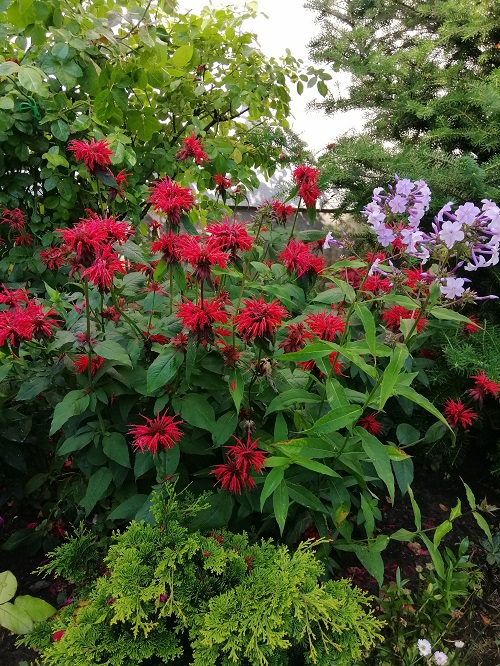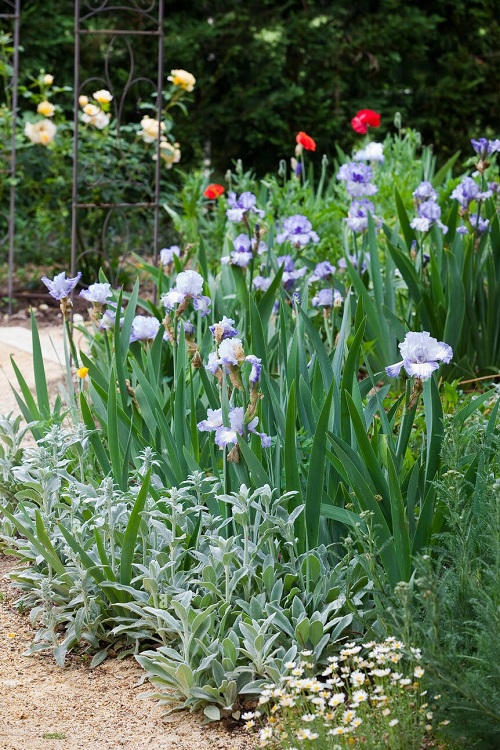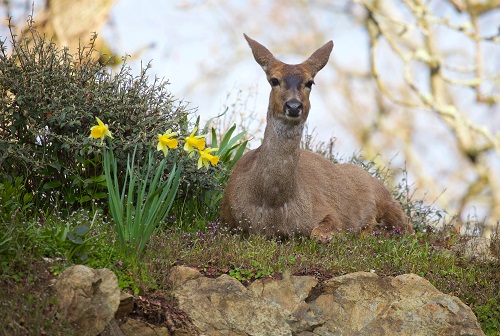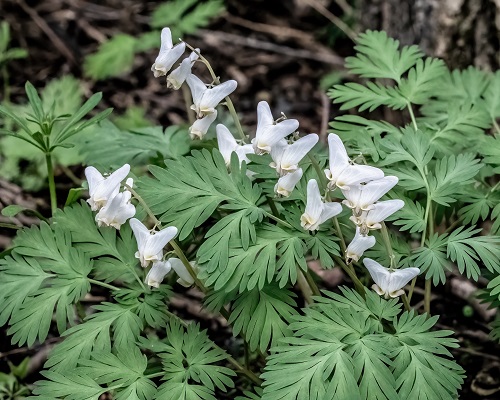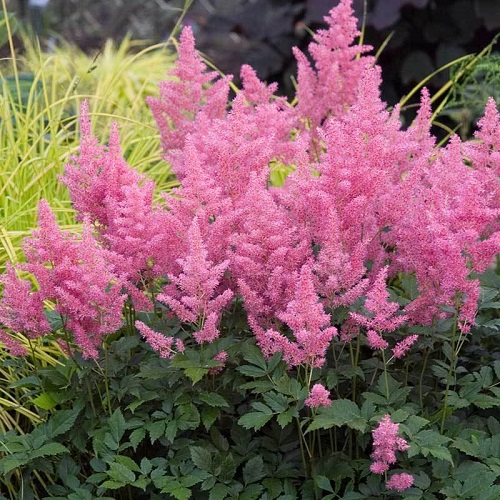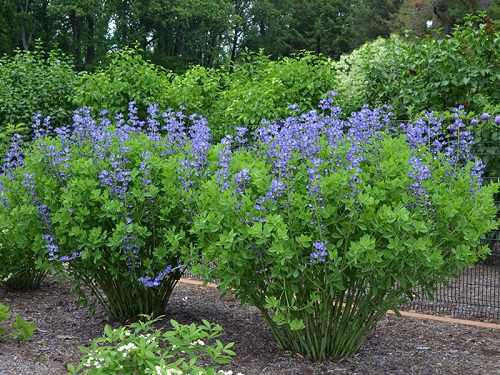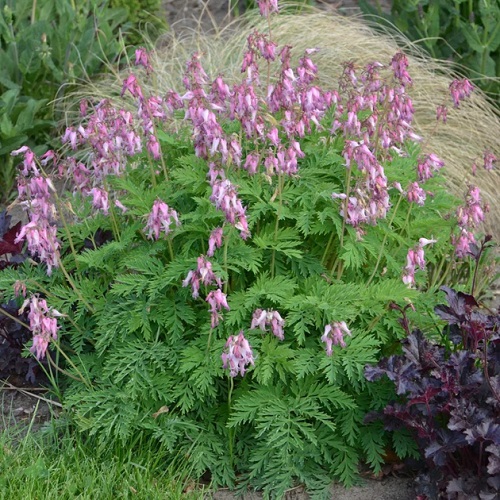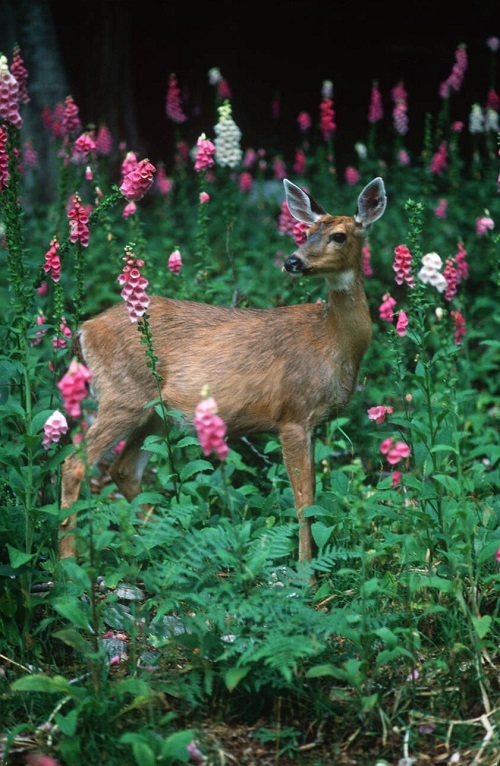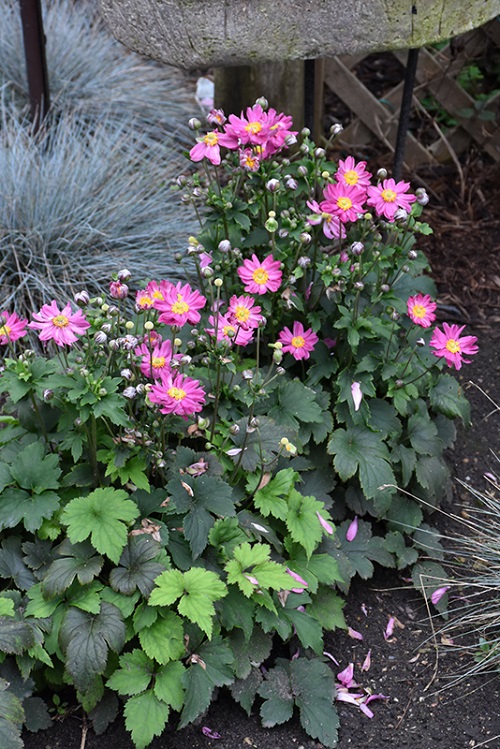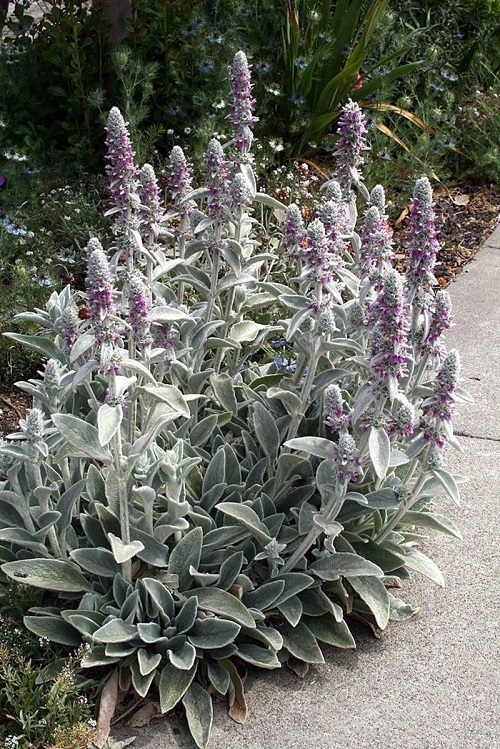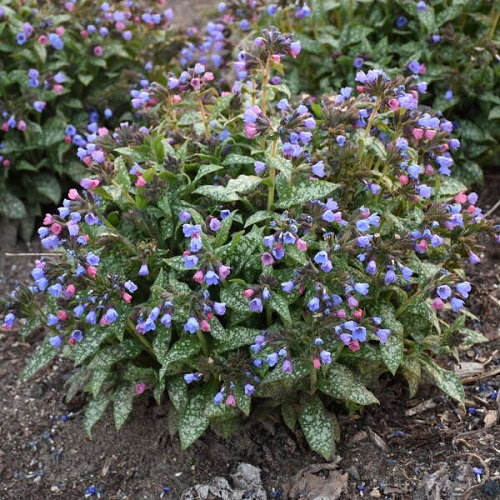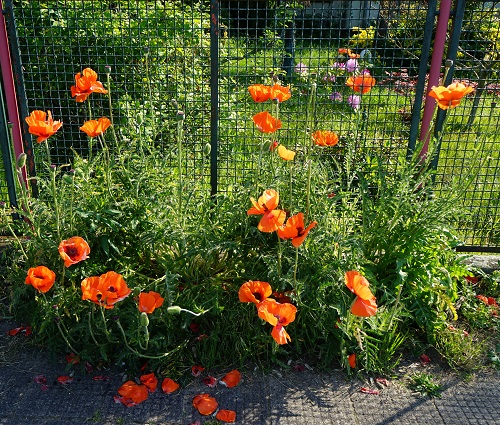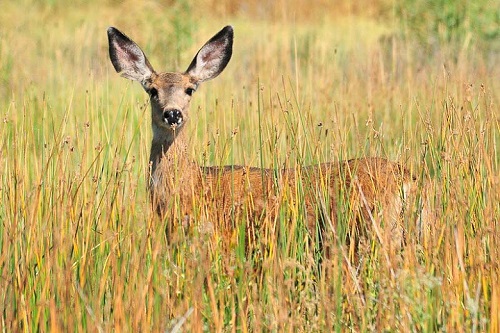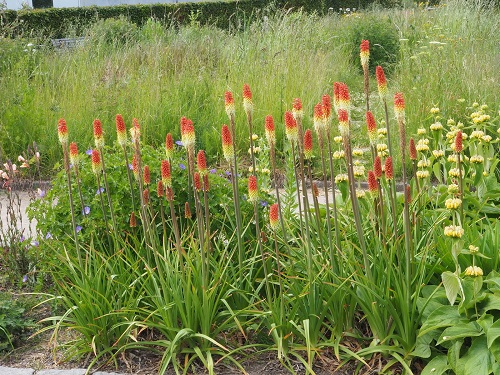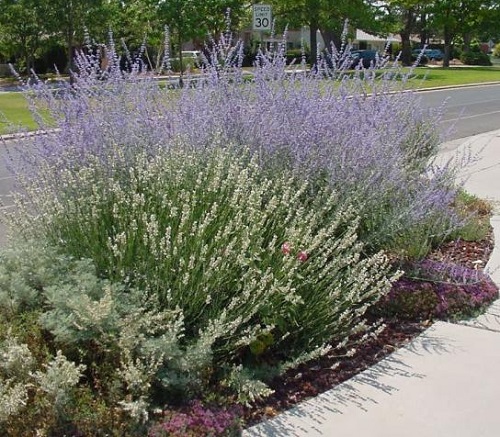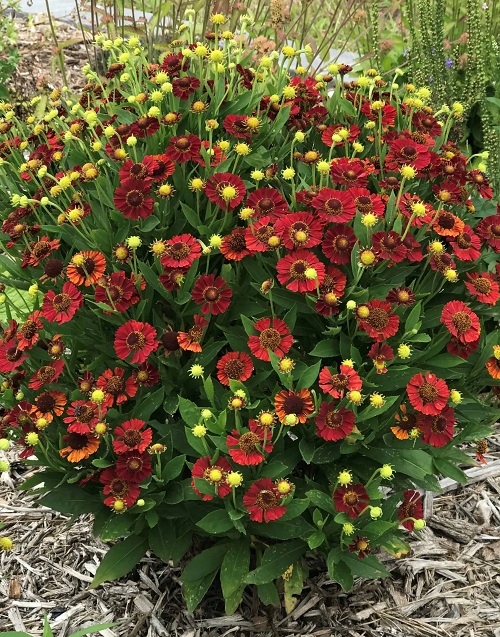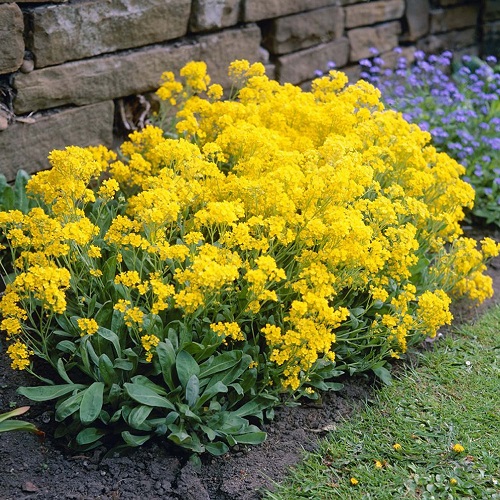There are some Best Deer Resistant Perennials that even the most persistent deer will turn their noses up at.
There are some plants that are less appealing to deer and may be good options for your garden. So, let’s dive into some of the Best Deer Resistant Perennials out there!
Here are the Best Deer Resistant Plants to keep them away!
Deer Resistant Perennials
1. Bee Balm
Botanical Name: Monarda didyma
USDA Zones: 3-9
If you’re looking for a deer resistant perennial with a little color, consider bee balm. This perennial is known for its vibrant red, pink, and purple blooms.
2. Bearded Iris
Botanical Name: Iris germanica
USDA Zones: 3-9
The bearded Iris is a popular flowering plant that comes in a variety of colors, including purple, blue, pink, and white.
Want to know When Irises Bloom? Check Here
3. Black Eyed Susan
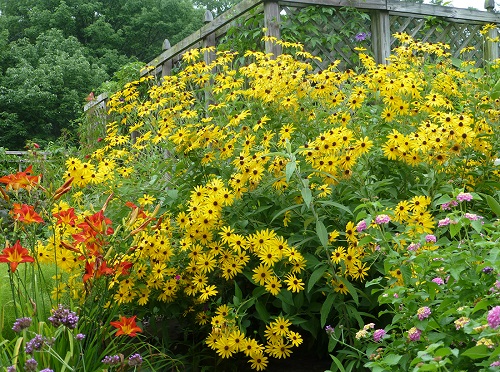
Botanical Name: Rudbeckia spp.
USDA Zones: 3-9
Black-eyed Susan is another great option for repelling deer. With its bright yellow petals and dark center, this plant adds a lot of cheerful color to any garden.
4. Bleeding Heart
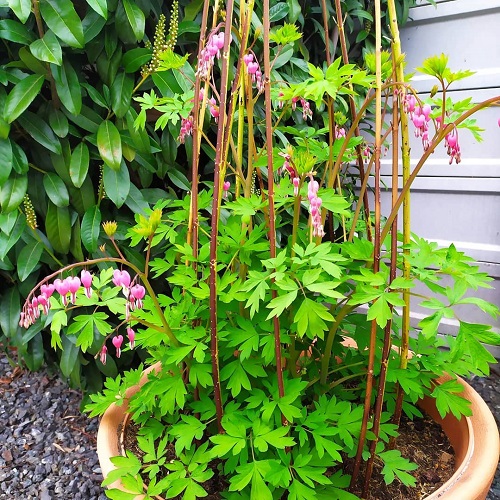
Botanical Name: Dicentra spp.
USDA Zones: 3-9
Bleeding Heart is a deer resistant perennial that’s loved for its unique heart-shaped flowers in shades of pink, red, and white.
5. Blue Star

Botanical Name: Amsonia
USDA Zones: 4-9
Blue Star is a hardy perennial with delicate blue flowers. Also, it is deer resistant, thanks to the presence of toxic compounds in its foliage that make it unappealing to deer.
6. Bog Onion
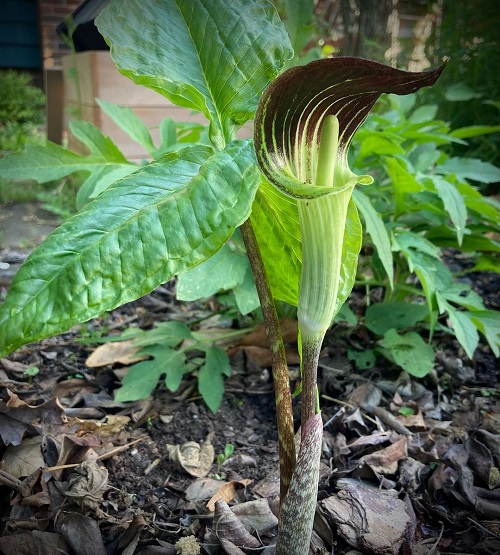
Botanical Name: Arisaema triphyllum
USDA Zones: 4-9
Bog Onion, also known as American False Hellebore, is a unique-looking plant with tall, spiky leaves and clusters of small white flowers.
Check Here to Learn about the Best Hellebore Varieties
7. Catmint
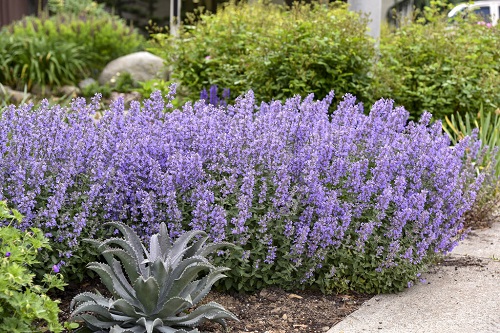
Botanical Name: Nepeta spp.
USDA Zones 3-8
Catmint is another great deer resistant perennial. It’s also a low-maintenance plant that produces pretty blue-purple flowers.
8. Columbine
Botanical Name: Aquilegia spp.
USDA Zones: 3-9
Columbine, the beautiful flowering perennial, contains poisonous compounds that make it a less attractive choice for deer.
10. Coneflower

Botanical Name: Echinacea spp.
USDA Zones: 3-9
Coneflower is another native plant that deer tend to avoid, and this is due to its spiny cones. It grows daisy-like blooms in shades of pink, purple, and white.
Here are various Types of Coneflower Varieties you can grow
11. Columbine Meadow Rue

Botanical Name: Thalictrum aquilegifolium
USDA Zones: 5-8
Columbine Meadow Rue is a popular deer resistant perennial because of its foliage. Deer dislike Columbine Meadow Rue’s foliage because of its unpleasant scent.
12. Daffodil
Botanical Name: Narcissus spp.
USDA Zones: 3-8
These cheerful spring-blooming daffodils produce flowers that come in a wide variety of colors and sizes. They’re also toxic to deer and other animals.
13. Dutchman’s Breeches
Botanical Name: Dicentra cucullaria
USDA Zones: 3-7
Dutchman’s Breeches is a small, delicate-looking plant that’s surprisingly tough. It’s not only deer-resistant but also drought-tolerant and shade-loving.
14. False Goat’s Beard
Botanical Name: Astilbe
USDA Zones: 4-9
False goat’s beard is a flowering plant that is frequently used in shady gardens. Its bitter flavor and the presence of saponins keep deer away.
15. False Indigo
Botanical Name: Baptisia australis
USDA Zones: 4-9
False Indigo is another deer-resistant plant. It is a hardy perennial with attractive blue-purple flowers. The plant is bitter in taste, and deer avoid it.
16. Fern Leaved Bleeding Heart
Botanical Name: Dicentra exima
USDA Zones: 3-9
Fern-Leaved Bleeding Heart is a deer resistant perennial with fern-like foliage and pink or white heart-shaped flowers.
17. Forget-Me-Not
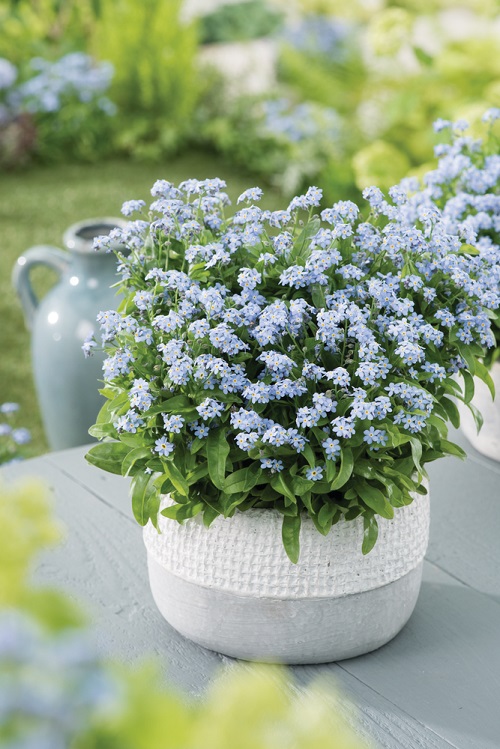
Botanical Name: Myosotis sylvatica
USDA Zones: 3-8
If you’re looking for a pretty and low-maintenance plant that’s also deer-resistant, forget-me-nots are definitely worth considering.
18. Foxglove
Botanical Name: Digitalis purpurea
USDA Zones: 4-10
Foxglove is a stunning flowering plant that’s often used in cottage gardens. The plant contains cardiac glycosides in its leaves and flowers that keep it safe from deer.
19. Fringed Bleeding Hearts
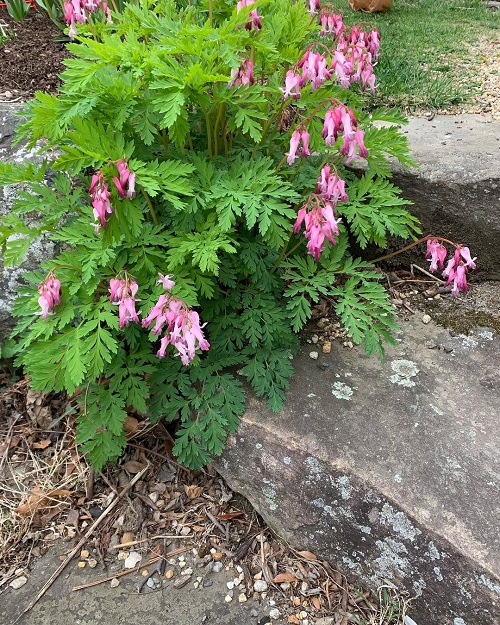
Botanical Name: Dicentra eximia
USDA Zones: 3-9
It has attractive pink or white flowers with fringed edges and fern-like foliage. Like other Bleeding Hearts, it contains toxic compounds that make it less attractive to deer.
20. Goatsbeard
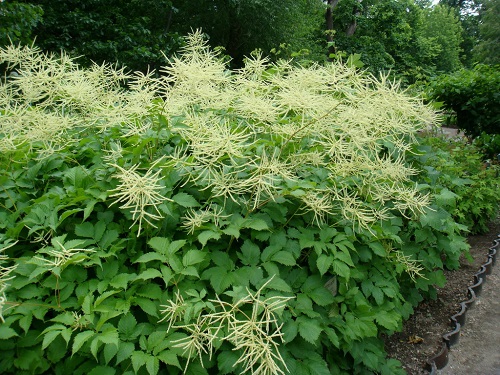
Botanical Name: Aruncus dioicus
USDA Zones: 3-7
Goatsbeard is a tall, stately deer resistant perennial with feathery white flowers that resemble plumes. These tall flowers are typically too tall for deer to reach.
21. Hardy Geranium
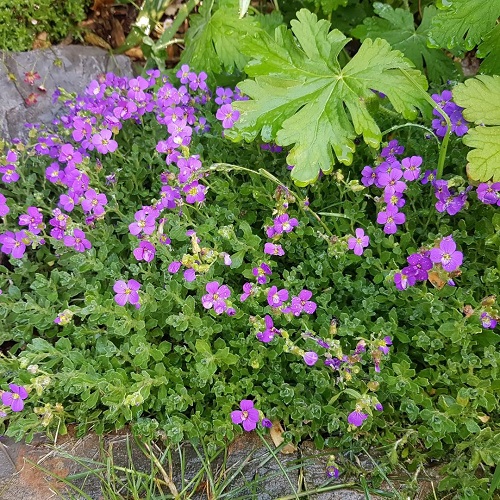
Botanical Name: Geranium bohemicum
USDA Zones: 4-8
The plant’s leaves are tough and fibrous, making them difficult for deer to digest. It also has toxic compounds in its foliage that make it unappealing to deer.
Find some Variegated Geranium Varieties here
22. Heartleaf Brunnera
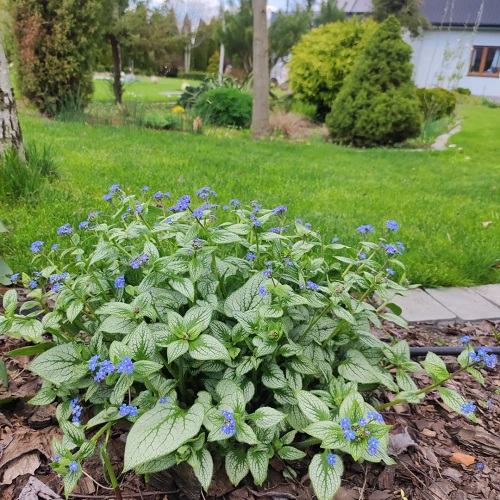
Botanical Name: Brunnera Macrophylla
USDA Zones: 3-8
It’s deer-resistant thanks to the presence of toxic compounds in its foliage that make it unappealing to deer. Additionally, the plant’s leaves are tough and fibrous.
23. Jack Frost Bugloss
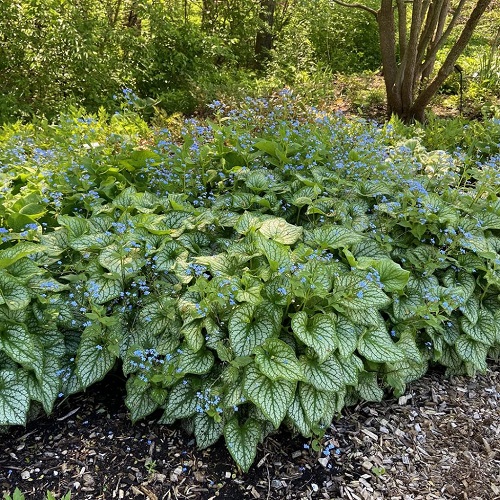
Botanical Name: Brunnera macroophylla ‘Jack Frost’
USDA Zones: 3-9
Jack Frost Bugloss, also known as Siberian Bugloss, is a deer resistant perennial with heart-shaped leaves and delicate blue flowers.
24. Japanese Anemone
Botanical Name: Anemone hupehensis
USDA Zones: 4-8
Japanese Anemone is a beautiful, tall plant with showy pink or white flowers. Because of its height and poisonous content, this plant is resistant to deer.
25. Lamb’s Ear
Botanical Name: Stachys byzantina
USDA Zones: 4-7
Lamb’s Ear is a low-growing plant with soft, fuzzy leaves that feel like a lamb’s ear when touched. Its leaves have a slightly bitter taste, and they are fibrous.
26. Larkspur
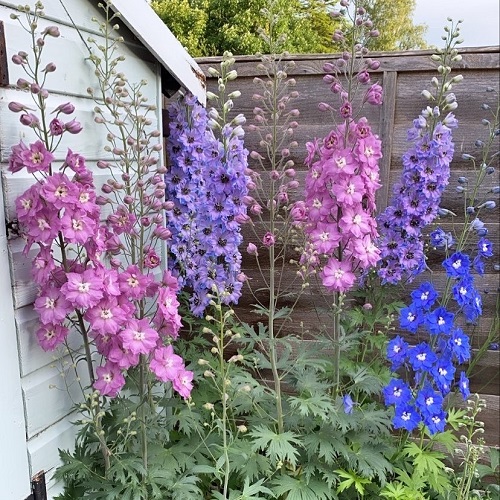
Botanical Name: Delphinium Spp.
USDA Zones: 3-7
The blooms and foliage of the tall larkspur are out of the deer’s reach, making it resistant to them. It is a spectacular plant with spikes of colorful blooms.
Look at the Best Purple Perennial Flowers here
27. Lavender

Botanical Name: Lavandula spp.
USDA Zones: 5-10
Not only do the lavender plants have a lovely scent and beautiful purple flowers, but deer simply can’t stand the smell.
Find the Best Lavender Flowers here
28. Lenten Rose
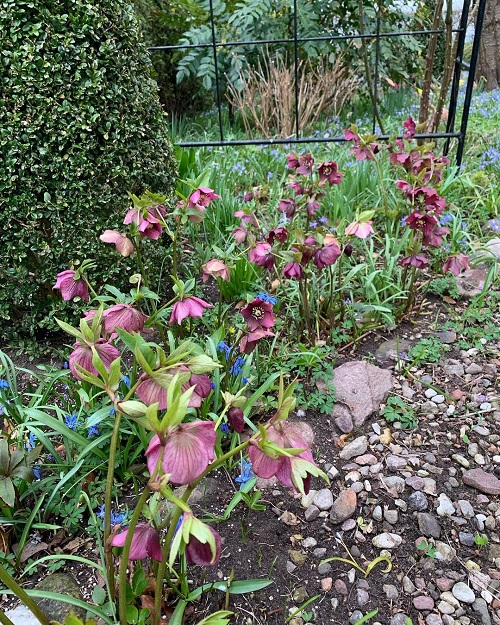
Botanical Name: Helleborus orientalis
USDA Zones: 4-9
Lenten Rose is a deer-resistant plant because it contains toxic compounds called glycosides that can cause nausea, vomiting, and other symptoms if ingested.
29. Leopard Plant
Botanical Name: Ligularia
USDA Zones: 4-9
The strong scent of this plant is believed to be unappealing to deer, and the thick, fuzzy foliage can be difficult for them to chew and digest.
30. Lungwort
Botanical Name: Pulmonaria officinalis
USDA Zones: 4-9
The hairy and somewhat sticky leaves of lungwort may not be very appetizing to deer, and the plant also contains compounds that can cause stomach upset if ingested.
31. Oriental Poppy
Botanical Name: Papaver orientale
USDA Zones: 3-9
The plant’s thick, hairy stems and leaves can be difficult for deer to navigate around and can also be somewhat irritating to their mouths.
32. Ornamental Grass
Botanical Name: Agrostis nebulosa
USDA Zones: 4-10
Ornamental grasses are also deer-resistant due to the tough, fibrous foliage, which can be difficult for deer to digest and may also be less palatable to them than other plants.
Here are the Best Ornamental Grasses for Containers.
33. Ornamental Onion
Botanical Name: Allium schubertii
USDA Zones: 4-8
This hardy deer resistant perennial has a strong scent and the taste of ornamental onions. This can be unappealing to deer, and the thick, fibrous leaves can be difficult to chew.
Find the Best Allium here
34. Peony
Botanical Name: Paeonia lactiflora
USDA Zones: 2-9
These classic flowers have fragrant blooms and come in shades of pink, red, white, and yellow. They are deer-resistant due to their tough, leathery leaves, which are not liked by deer.
Find the Best Peony Varieties here
36. Dianthus
Botanical Name: Dianthus
USDA Zones: 4-9
It has a strong scent that can be unappealing to deer, and its tough, wiry foliage makes the plant deer-resistant.
37. Red Hot Poker
Botanical Name: Kniphofia
USDA Zones: 5-9
The tough, sword-like leaves of red hot poker can be difficult for deer to chew and digest, and the plant also contains bitter-tasting compounds that make it less appealing to them.
Look about Growing Red Hot Poker Plants here
38. Rodgers Flower
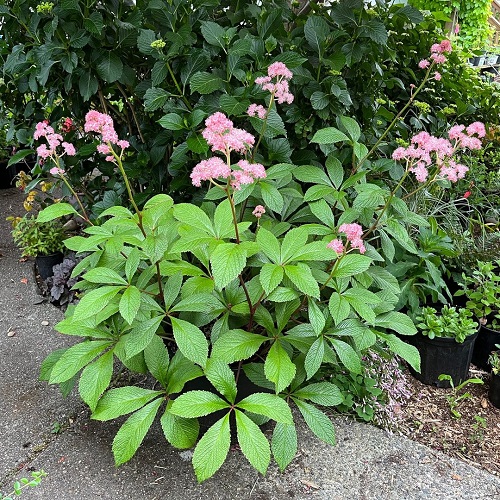
Botanical Name: Rodgersia pinnata
USDA Zones: 5-7
Rodgers flower is deer-resistant due to its toxic compounds, which can cause stomach upset and other symptoms if ingested.
39. Rose Campion
Botanical Name: Lychnis coronaria
USDA Zones: 4-8
The silvery-green leaves and stems of this deer resistant perennial have a fuzzy texture that can be unappealing to deer. It also produces a bitter-tasting sap
40. Russian Sage
Botanical Name: Perovskia atriplicifolia
USDA Zones: 4-9
This perennial not only repels deer, but it’s also drought-tolerant and attracts pollinators. Plus, its silvery leaves and purple flowers make for a stunning addition to any garden.
Have a look at the best Types of Sage Here
41. Sage
Botanical Name: Salvia officinalis
USDA Zones: 6-9
Sage is a fragrant herb that’s commonly used in cooking and has silvery-green leaves and purple flowers. It’s also deer-resistant thanks to the presence of aromatic oils in its foliage.
42. Salvia
Botanical Name: Salvia spp.
USDA Zones: 5-10
Salvia is another deer resistant perennial that stands out with its spiky blooms in shades of blue, purple, pink, and red; this plant adds a lot of visual interest to any garden.
43. Sneezeweed
Botanical Name: Helenium autumnale
USDA Zones: 3-8
Sneezeweed has bitter-tasting compounds in its foliage, and its leaves are also tough and fibrous, which makes it unappealing to deer.
44. Speedwell
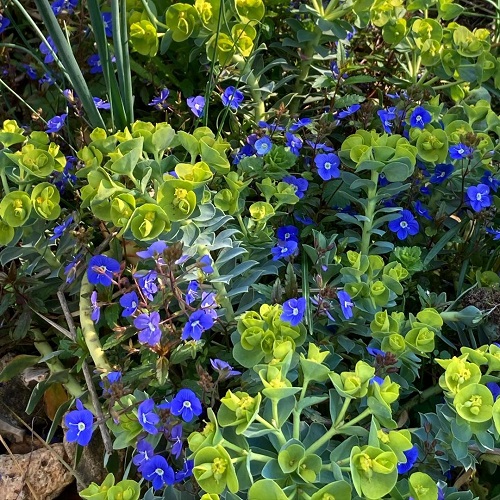
Botanical Name: Veronica spp.
USDA Zones: 3-8
The tough, fibrous leaves of Speedwell can be difficult for deer to digest, and the plant also contains compounds that can cause stomach upset if ingested.
45. Tickseed
Botanical Name: Coreopsis spp.
USDA Zones: 4-9
Tickseed is deer-resistant due to its tough, wiry stems and leaves, which are not very palatable to deer. Additionally, the plant produces a bitter-tasting sap.
46. Wall Germander
Botanical Name: Teucrium chamaedrys
USDA Zones: 5-9
The thick, woody stems and leaves of wall germander can be difficult for deer to navigate around. The plant also produces a strong, minty scent that can be unappealing to them.
47. Yarrow
Botanical Name: Achillea spp.
USDA Zones: 3-9
his plant can tolerate a wide range of soil types and growing conditions, and its delicate-looking flowers come in shades of pink, white, yellow, and red.
48. Yellow Alyssum
Botanical Name: Aurinia Saxatilis
USDA Zones: 3-7
Yellow Alyssum is a low-growing, sun-loving deer resistant perennial with clusters of fragrant yellow flowers. Its sap and bitter taste keep deer away from the plant.

